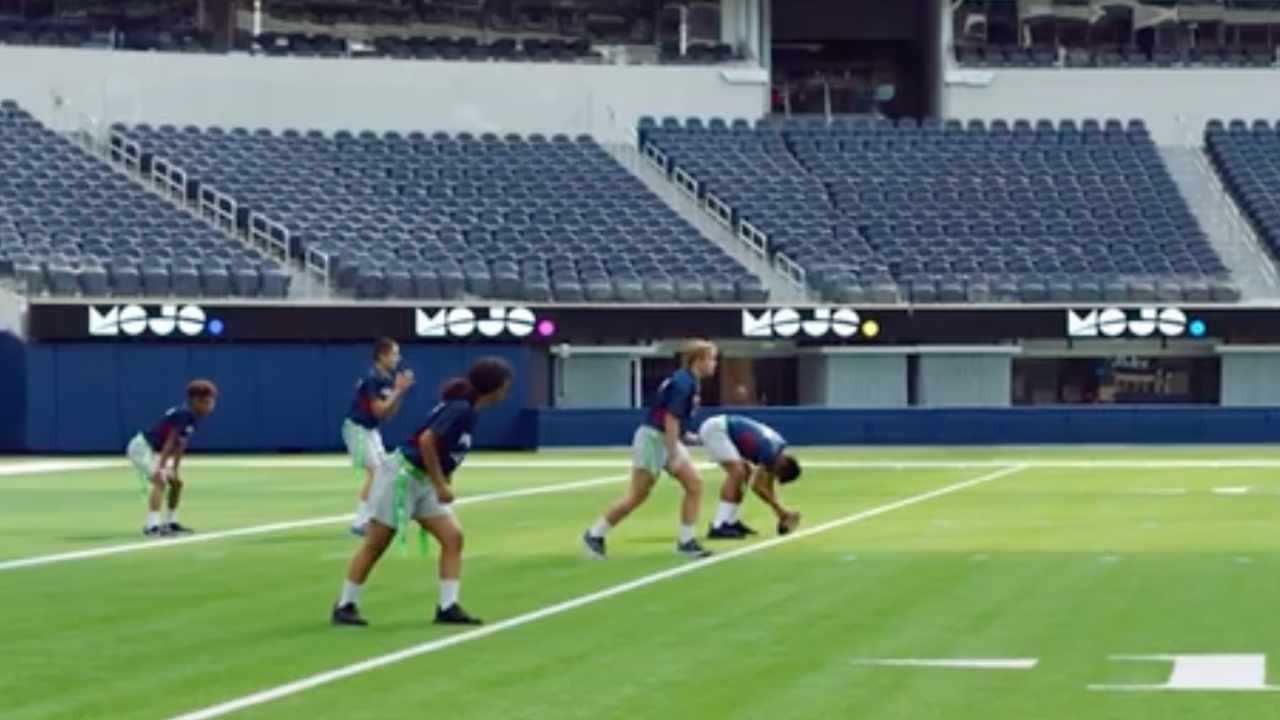How to Coach Flag Football
The quick and easy guide to coaching flag football
Team MOJO
| 5 min read

There’s more than one reason why flag football is one of the fastest-growing youth sports in the US. It’s fun. It’s high energy. And it’s accessible — boys play, girls play, and, in many parts of the country, it’s one of the more affordable youth sports in town.
Coaching flag football can be equally fun, as long as you have the right things in place — starting with a solid understanding of what kids can do at what age. (Teaching young players who don’t know left from right about routes, positions and plays is no small feat!) From your first practice to game day, we’ll walk you through everything you need to know about how to coach flag football.
The rules
Flag football regulations differ league to league, so be sure to check there first. That said, there’s a fairly standard set of rules that most organizations follow, with the first and foremost being: No contact allowed.
Unlike tackle, flag football players can’t block, tackle or dive — for safety reasons. Instead, in order to stop the play, the opposing team needs to pull at least one flag off the ball carrier’s belt.
On offense, flag has the same four-down system as tackle. But there are differences: in most flag leagues, the QB can’t run unless the ball is handed off first, and only forward passes are allowed. Plus, any player is an eligible receiver, making for some creative routes and plays.
A handful of tackle football penalties carry over into flag, like blocking, holding, pass interference, and delay of game. But the new penalty to note is flag guarding — which happens when the ball carrier purposely prevents another player from pulling their flag off.
The skills
There’s a steep learning curve for flag. The key to helping young players master the fundamentals is taking it one step at a time. And most importantly, only covering the skills that their age division can understand.
While everyone benefits from working on speed, agility and communication, there are some sport-specific skills that need to be mastered.
On offense, all age divisions need to know how to snap the ball, how to do a handoff and the fundamentals of throwing and catching. But most importantly, they need to know their routes.
Running routes: The route tree is the heart of all calls — it outlines where receivers run during plays. When coaching kids, start with the simplest routes:
- Fly: Easy — run straight and fast.
- Slant: Run forward for a set number of yards, then cut at roughly a 45-degree angle. Typically cut “in” — toward the QB.
- Out: Run forward then cut a 90-degree angle toward the sideline to gain some quick yardage.
On defense, all age divisions should cover flag pulling technique and man defense, and older divisions can try their hand at zone defense and blitzing.
Practice 101
When it comes to practice, there’s an unwritten rule every flag football coach must follow: Be prepared. MOJO can design an age-appropriate practice for players 5 through 13, but generally-speaking, coaches should start with a dynamic warmup, run through a few games and drills that teach basic skills, like throwing the ball, catching the ball, and flag pulling. Then, you can move to mastering position-specific techniques and incorporating routes and plays.
Game time
During games, flag football coaches are busy, especially in younger divisions where players are still learning where to be and where to go. Here are four tips to get you started.
- Be prepared. Arrive early, have your equipment ready, and your playbook good to go.
- Have a plan: Be sure to know how you plan to substitute players so that everyone gets good playing time. If they don’t play, they don’t learn.
- Keep your calls simple. Flag football plays can get complicated. It makes you wonder how an 8-year-old is supposed to remember it all. (Spoiler: They’re not.) The key to successful plays is keeping them age-appropriate — and simple. Start with plays that boost their confidence, and then you can pull more into your rotation. More experienced players can try any of these 10 popular flag football plays on MOJO.
- Follow a post-game routine. This is the perfect time to show great sportsmanship, dish out high fives to your players, and leave them feeling proud — win or lose.
The bigger picture
In flag, the coaches who make the greatest impact are the ones who teach skills beyond the game. Remember, it’s not just about winning — it’s the moments that keep kids playing season after season. They want to make friends, have fun, and be a part of a team.
So at the end of every season, find meaningful ways to celebrate your team and remind them of all they’ve learned since the first practice. Focusing on your team’s best moments — outside of the scoreboard — is what they’ll remember, and so will you.




